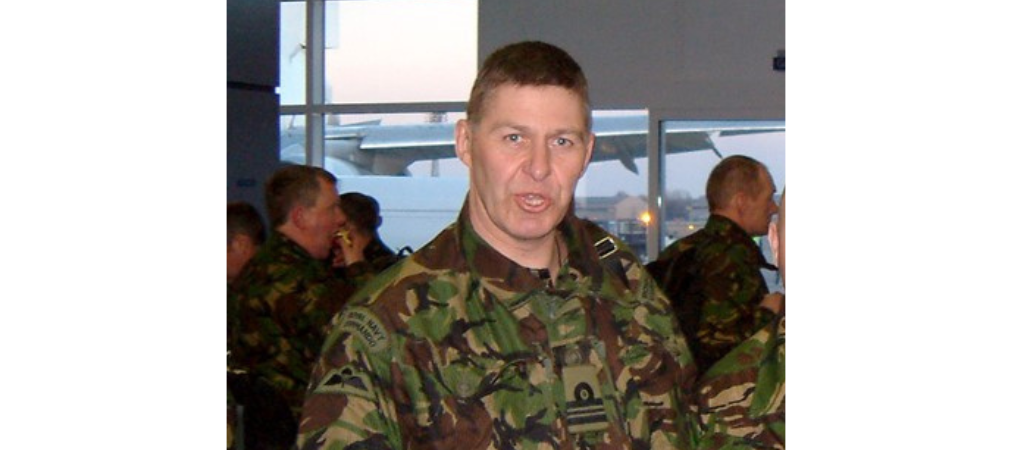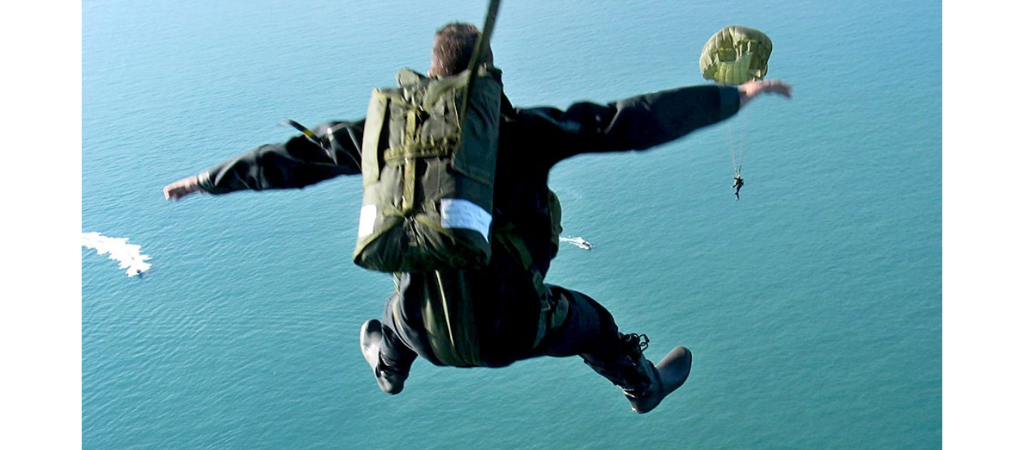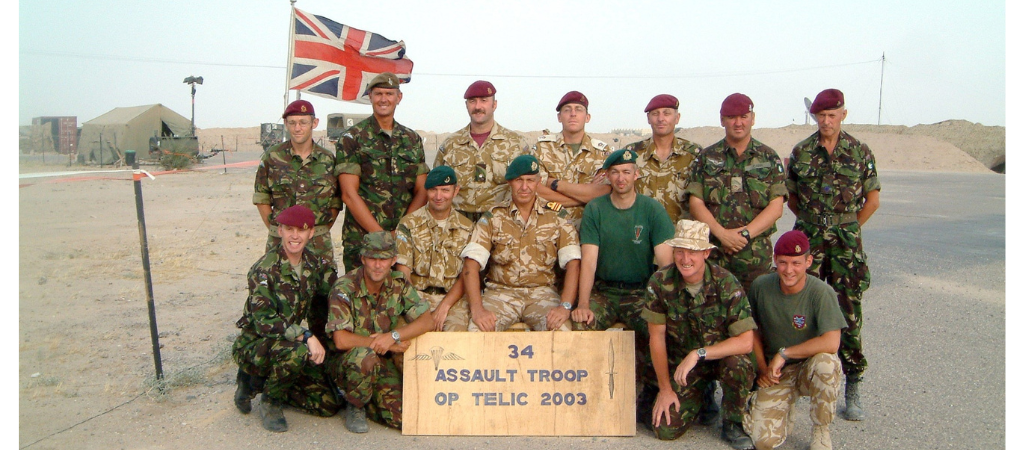Since Mike Edwards started his medical training he’s been making decisions and performing under pressure. The failure rate for medical exams was high enough and then when he first qualified his rota was 120 hours a week, working for four days straight without much sleep.
During his surgical training, Mike joined the Royal Navy Reserves and completed the Royal Marines Commando Course to get his Green Beret and then finished parachute training to get his Wings (awarded for military parachutist proficiency)
In 2003, as a Royal Navy Reserve, Mike was posted to Basra in Iraq as a trauma surgeon during the second Gulf War, where his field hospital was the closest a hospital had been to the front line since the battle of the Somme.
Having lived a substantial part of his career making decisions in stressful situations, how did Mike choose the right options and how can his lessons be applied to the business environment?
Here are Mike’s top five pieces of advice for business leaders to make the right decisions under pressure.

1. Find space to breathe
As soon as Mike reached Iraq the stress levels he was accustomed to increased significantly as a missile attack intensified the situation before he’d even reached the front line.
In a business scenario, you’re unlikely to experience such exceptional circumstances, but your body still responds to stress in the same way. Your breathing rate increases, you become more agitated, and your mind goes into overdrive. To combat this, you need to ‘get out of your head’ and ‘into your body’ to distract yourself from the pressure.
The best way to do this is to focus on breathing and only your breathing. Sit in a chair, close your eyes and breathe in and out without focusing on anything else. If other thoughts pop into your head, label them and let them go. It doesn’t matter what you call them – stress, a personality you don’t like, or a target you don’t want to think about, but let them go and come back to your breathing.
This approach brings your body back into a state where it’s not so stressed and transfers your brain from something wild and hyperactive into something much more calm. It’s a physiological effect and allows you to be more focused on the problem at hand.
Although it’s unlikely you’ll ever have to make difficult decisions in a very short time span, as you might have to in a battlefield medical situation, the technique is valid nonetheless. With practice, you should be able to get your breathing and mind relaxed in less than a minute.
2. Never lose your temper
Early in my medical training I learnt one of the most important lessons in making decisions under pressure – never lose your temper.
A particular surgeon used to shout and scream at his team while performing surgery and, as a result, would lose their respect meaning procedures often didn’t go as planned. Once you lose your team, they won’t work with you to solve the problem.
My advice is to learn from anyone (and I really do mean anyone), be considerate and keep your temper well under control. If you let the stress take over, you’re thinking about yourself and not thinking about the situation or those that can help you.
3. Stay focussed and delegate
As an on-duty surgeon in a field hospital, you have a role, you’re scrubbed up and can’t stop doing what you’re doing to get involved in someone else’s problem. If you did, you’d stop concentrating on the patient on the table, you’d need to re-sterilise and you’d lose precious time, which could lead to catastrophic results.
While the same is clearly not true in the boardroom, the principle still applies. You need to concentrate on the job at hand and consider what can be delegated to avoid getting drawn away from the bigger picture. Know your team’s strengths and weaknesses (so you don’t delegate to the wrong person), discuss the situation logically, allocate the roles and then get back to focusing on what you personally need to do.

4. Constantly calculate the best and worst outcome (plus the options in between)
On one exercise, my parachute partly detached from the harness during a 1,000 feet night-time jump. Immediately I was weighing up the best and worst-case scenarios. Do nothing and leave it to fate (not an option) or deploy my reserve (as my main chute was already deployed, this was high risk). In the end, I managed to wrestle with the cords and landed without injury into the sea.
But that was just the start of my problems.
The sea was four degrees centigrade, and the cold quickly kicked in, but I knew if I started swimming, I would lose heat very quickly and I didn’t know exactly where I was or how far I had to go. So, I deployed the personal life preserver around my neck and tried to relax to retain heat. After a few hours, it was clear that a rescue wasn’t going to be imminent, so I curled up like a bean and let myself drift with the current in the knowledge that this was my best chance of survival and rescue (which eventually came early the next morning).
Throughout the whole experience I was constantly evaluating the best and worst outcomes of any decision I had to make and acted rationally, in a way that increased the chances of my survival. Basic sea survival training is essential before parachuting at sea.
It’s an extreme example, but you can relate the process to business scenarios. If you take the time to calculate the best and worst outcomes in any decision you need to make, you present yourself with the capacity to actually make a decision; and it will be based on your best assessment rather than simply reacting impulsively and doing something you shouldn’t do (which in this scenario would make my ‘demise’ quicker and more certain).
5. Balance courage with caution
Courage is always necessary when making decisions under pressure, otherwise there’s no progression or movement. But that courage must be applied with the knowledge of what a poor outcome would look like and your preparedness to live with that outcome.
In Basra, I was presented with a soldier who had a penetrating wound to the head. Because the injury was shrapnel penetrating the skull and into the brain, it was not my specialist field of expertise, but the nearest neurosurgeon was 100s of miles away on a battleship in the Gulf. The soldier couldn’t be flown as the flight would kill him, and a road trip would take too long and potentially end with the same tragic result. My colleagues and I discussed the logical steps and as the skull is a bone, it was decided I was best placed to handle it as an orthopaedic surgeon. On the face of it, the procedure was complex, but I dealt with each stage of the operation as one variable that needed to be addressed, a bit like unravelling a knot. As a result, I was able to slowly remove the shrapnel, stop the bleeding and the patient made a full recovery.
My experience and belief in myself gave me the courage to make the decision to treat, but it was very much balanced by the catastrophic outcomes that would likely have occurred should I have made a poor decision.

Mike Edwards is a Consultant Orthopaedic Surgeon at the Thornbury Hospital in Sheffield. Mike also has a keen interest in battlefield surgery both past and present and has appeared in productions for the BBC, the History Channel and the National Geographic Channel.

